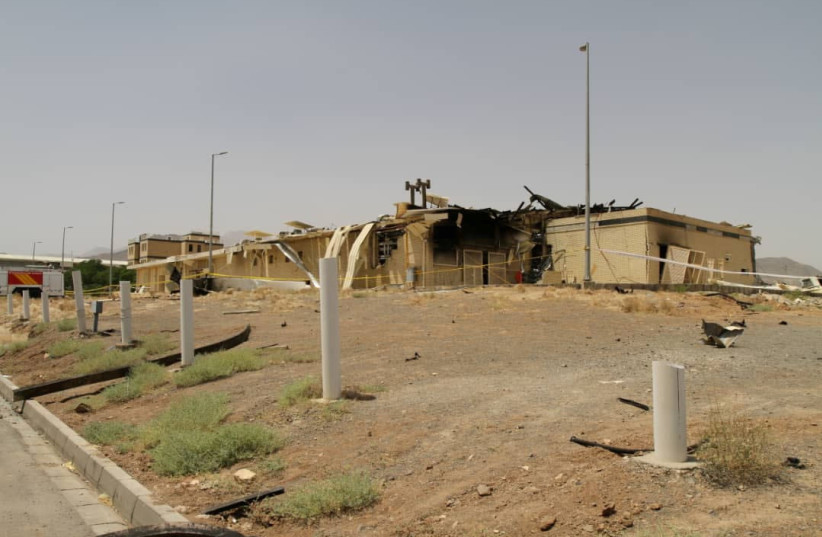Some 164 to174 centrifuges may have been damaged or destroyed by the April explosion.

(photo credit: ATOMIC ENERGY ORGANIZATION OF IRAN/WANA VIA REUTERS)
On April 11, there was an explosion at Iran’s all-important Natanz underground nuclear facility.
After months of debates and different narratives about what the impact was of that explosion, Monday night’s The International Atomic Energy Agency quarterly report finally lifted the veil. More will become known in a few more months and the picture will be clearer in another year.
But it can already be said that neither the original Israeli estimates of a nine-month delay to Iran’s nuclear program nor Iran’s claim that the impact was very minor are true.
The truth is somewhere in the middle.
The IAEA report said that between February and May, 335.7 kg. of 5% level enriched uranium was produced, an average of 107 kg. per month.
In other words, although Tehran finished the quarter with significant amounts of new enriched uranium, the amounts seem to be consistent with Iran’s progress made before April 11, and making little progress afterward.
In addition, a central question remains how many of Iran’s army of centrifuges were damaged by the explosion.
Institute for Science and International Security President David Albright said, “production has been reduced,” while adding “the amount would be better reflected in the next report since this one includes LEU production at pre-explosion levels for 54 days and post-explosion levels for 40 days.”
Moreover, he said, “An added difficulty is the Iranians have every incentive to show operation via the idea of a report of feeding uranium into cascades.
It could be that those cascades are working with many damaged centrifuges or at reduced efficiency,” something which the IAEA might not be able to fully detect.
Based on widespread reports by international media from a range of sources about the incident and on the above new data, Albright estimated that as many as 15 cascades, each containing around 164 to174 centrifuges may have been damaged or destroyed by the April explosion.
He noted that even when a cascade is not destroyed if deposits of debris make their way into the piping, easy replacements of various machinery becomes impractical.
This by no means ends Iran’s nuclear program, which included around 5,060 operating IR-1s between the Natanz and Fordow nuclear facilities, along with another 13,000 or so in storage.
It is, however, a much more significant blow than Tehran initially wanted to admit.
Albright also speculated that perhaps as many as three of six cascades of more advanced IR-2m centrifuges may have been destroyed.
Another major question raised after the Natanz attack was how significant was it that the Islamic Republic started enriching uranium to an all-new high of 60%.
Previously, the vast majority of enrichment had been enriched at the 5% level, with a small amount reaching up to the 20% level, but 60% – much closer to the weaponization 90% level – was unheard of until then.
Iran presented its enrichment to the 60% level as another example they used to support their claim that the Natanz attack had not substantively limited its enrichment progress.
However, the latest report indicates that Iran has only enriched around 2.4 kg. in seven weeks.
Albright said that it would take 40-50 kg. of 60% enriched uranium to be sufficient for a nuclear explosive.
This means the Iranians have produced a mere 5 to 6 % of what they need.
Considering all of the above, the Islamic Republic’s nuclear program and progress were greatly weakened by the April explosion at Natanz in both quantity and quality, something that has – at least temporarily – also reduced some of their leverage in the ability to threaten the West.
At the same time, Iran demonstrated resilience, which surprised even top Israeli intelligence officials, and they have shown a powerful capacity to recover from similar great setbacks before.
As reported by The Jerusalem Post
